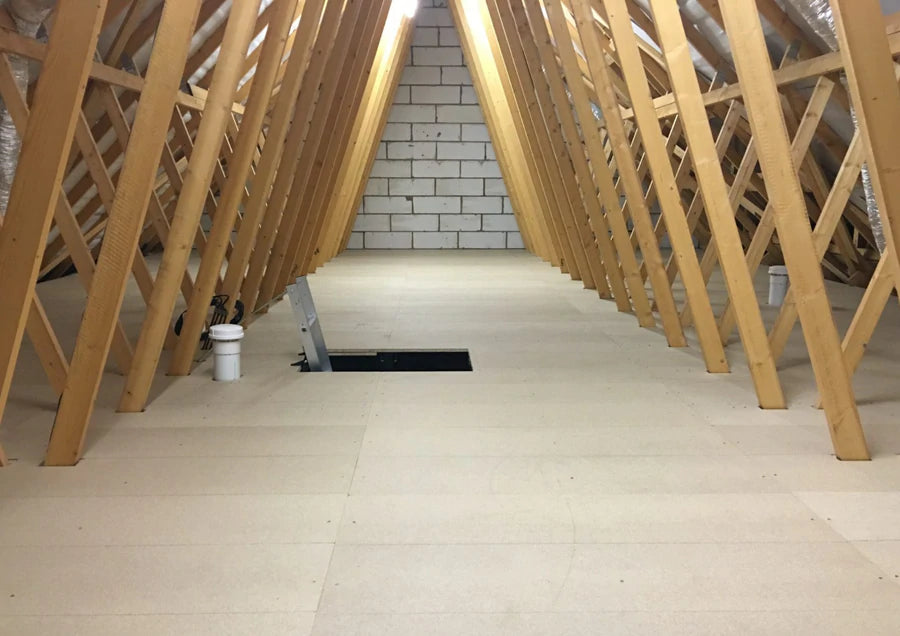Here's What You Need to Know
Can you put loft boards on joists? What is the right way to do it? This article outlines what you need to know about joists and boarding a loft.
Are you lacking storage space in your home? If so, loft boarding may be the answer to your storage problems.
However, before you start this process, you need to know how to do it correctly to create a safe, sturdy platform for your items and to ensure your insulation is not compromised.
One of the questions homeowners often ask is, "Can you put loft boards on joists?"
In this article, we're going to look into the key points you need to know about the process.
Are your joists strong enough?
Firstly, check to ensure that your joists are strong enough to cope with the additional loads of loft storage and the weight of a person moving around the loft.
Trusses in new build homes are designed and built to allow for 25Kg/m2 of storage plus the weight of a person walking in the loft.
For older homes a professional survey may be required. The safe load will depend on the size of the joist and the length of its span.
If the answer is yes, then read on.
Can I Board directly onto joists?
The simple answer is no.
The most common joist heights in use in modern properties are between 75mm and 100mm. Some older properties may have very different joists heights and in some cases irregular heights.
Current government guidelines specify that loft insulation should be 0.16N/m2K or the equivalent of 270mm of mineral wool/quilt insulation (the most common method of insulating a loft).
Therefore, boarding directly onto joists would mean in many cases having reduced insulation in between the joists (75mm – 100mm) or squashing insulation down where there is boarding from 270mm to 100mm.
Boarding directly onto the joists can result in insulation compression or removal of insulation which in both cases you'll pay for in your energy costs.
To find out how to solve these problems read on.
Raised Loft Boarding Solutions
Timber Sub Frame
The traditional way to raise storage boards above quilt insulation is to cross batten the joists with timber and secure boards on top. To raise insulation above 270mm of insulation the timber would generally need to be at least 170mm in depth above the joists. While relatively inexpensive for materials the labour is not and the timber can add a huge amount of weight to the structure even before storage is added.
More importantly this method has been found to create thermal bridges and Part L1A of building regulations calls for a new SAP calculation if this method has been used to raise the floor. It is therefore not considered best practice to use this method.

There are a number of specific products on the market that aim to solve the above problems by safely raising loft boards above mineral wool/quilt based insulation cost effectively and without creating thermal bridging or adding excessive weight. These products all consist of supporting structures to lift the boards above the current government recommended depth of quilt insulation.
Products such as Loft Legs consist of ultra-strong, recycled plastic legs that create a raised platform strong enough to walk on and support storage items. They are easy to fit, extremely lightweight, allow for pipes and cables to be present and do not create thermal bridging.
Loft Legs are simply screwed into joists in a grid formation and loft boards are them screwed to the top platform of the legs. They are available in two heights to suit different quilt depths.

Best Method for Installing Loft Boards

As we have seen, the easiest, safest and most cost effective method is to use a raised board system such as the Loft Leg raised boarding system over mineral wool insulation.
Now You know the Answer to, "Can You Put Loft Boards on Joists?"
Before this article, you wondered, "Can you put loft boards on joists?"
While the answer is "Yes," raising your loft floor above the insulation and preventing the risks addressed above is the best way to do it.
If you're ready to get the process started and need a helping hand, get in touch. We're happy to answer any questions you may have about the process.




